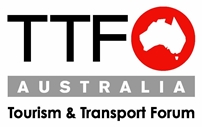
Time for faster, smarter, better trips across ‘the ditch’
The close to seven million passengers who fly between Australia and New Zealand each year could see their travel time slashed with the introduction of simplified border processing reforms at our airports, a new report released today by the Tourism & Transport Forum Australia (TTF) has found.
The report, ‘Fast forward: Streamlining trans-Tasman air travel’, produced for TTF by international consultancy Airbiz Aviation Strategies, explores ways to simplify air travel between Australia and New Zealand and improve the travel experience by reducing pressure on international air terminals in both countries.
TTF CEO Margy Osmond said the report proposed sweeping reforms to streamline trans-Tasman air travel, including immigration pre-clearance at the point of departure, integrated terminals handling both domestic and international flights, and leveraging the latest screening technology to drastically reduce the time spent in queues, while improving security at the border.
“Australia’s visitor economy keeps going from strength to strength, with each year seeing record increases in the number of overseas travellers. However, the rate of growth in visitor arrivals is rapidly overtaking the capacity of our airports to deal with the higher volumes,” Ms Osmond said.
“The answer does not lie in continually building or expanding terminals to absorb the growth.
“We need to speed up passenger movement through our existing international terminals, and the fastest and smartest way is to remove people from queues who don’t need to be there – and the obvious place to start this reform is between Australia and New Zealand, two markets which deliver more visitors to each other than any other market.
“New Zealand is our closest and most trusted ally and it is time the onerous and archaic constraints currently in place are relegated to the dustbin of history.”
Ms Osmond said scenarios proposed in Fast forward would reduce travelling times by embracing the use of advanced biometric screening technology to enable immigration and quarantine ‘pre-clearance’ of passengers prior to departure, eliminating further formalities for most trans-Tasman passengers when they reach their destinations.
“Our vision is to maximise pre-clearance of international passengers so that their arrival at the destination airport is similar to that of a domestic traveler – a whole lot easier and much more pleasant,” Ms Osmond said.
“Border formalities could be slashed by linking each passenger’s travel documentation to facial recognition technology. Known as ‘Face on the Fly’, this system would identify trans-Tasman passengers as they pass various points between baggage check-in and boarding their aircraft, without them needing to stop or produce passports, travel documents or even boarding passes.
“Using information provided before departure this system would also enable the majority of passengers to collect their luggage from a ‘domestic-like’ reclaim area, and leave without further formalities.
“This would potentially enable many trans-Tasman air services to operate from integrated domestic/international terminals, freeing up gates in pure international terminals, reducing arrival and departure queues, and potentially streamlining flight connections for passengers transferring between trans-Tasman and domestic flights in both Australia and New Zealand.”
Ms Osmond said the Airbiz Report was designed specifically to drive discussion of potential options to reform trans-Tasman air travel.
“What is particularly exciting is that if successful on the Tasman, these reforms could form the basis of similar changes to revolutionise travel from other trusted, high-volume markets such as China,” Ms Osmond said.
POTENTIAL BENEFITS OF REFORM INCLUDE:
For passengers:
- Simplified airport experiences
- Shorter journey times across the Tasman
- Easier connections between trans-Tasman and domestic flights
For governments and border agencies:
- Enhanced protection of borders through improved decision making, based on better quality information and more automated systems
- More productive use of border officers to focus on intelligence and border protection
- Opportunities for collaboration and cost reduction through trans-Tasman resource sharing
For airlines:
- Lower costs, greater efficiency through more streamlined domestic/trans-Tasman operations
- Better utilisation of aircraft with reduced turnaround times on trans-Tasman routes
- Potential to seamlessly operate aircraft between domestic and trans-Tasman routes
- Productivity gains such as ability to switch aircrew between domestic and trans-Tasman routes
For airports:
- Less congestion within international terminals
- Improved efficiency of terminals with potentially-integrated domestic/trans-Tasman facilities
- More gates available in pure international terminals during peak periods with faster turnaround of trans-Tasman flights or their transfer to integrated domestic/international facilities
